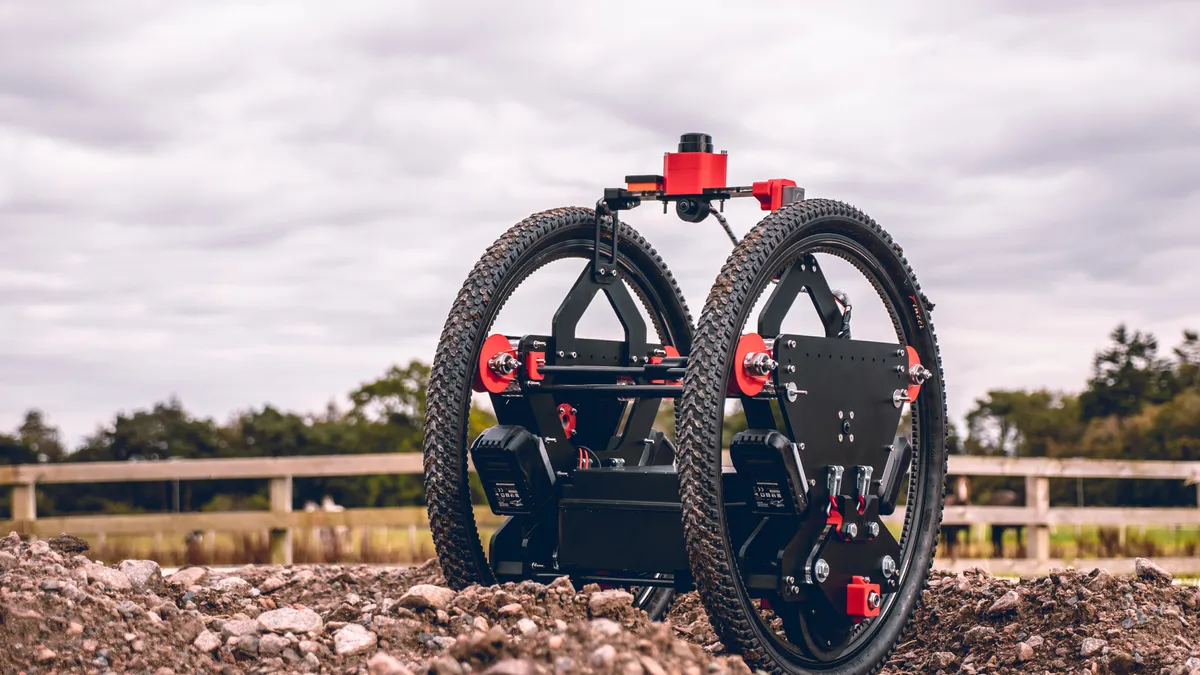Dive Brief:
- British company Casta Spes Technologies has developed a robot designed for security surveillance and documentation of construction jobsites that drives autonomously through sites.
- Ziva is a two-wheeled, image-capturing robot that Casta describes as a temporary closed-circuit TV for jobsites. The robot, which can travel up to 11 mph and has a 12-hour battery life, utilizes cameras and facial recognition software to identify people and vehicles present and if they’re allowed to be in the area.
- The robot is only available in Europe, but Casta co-founder and CEO Selby Cary told Construction Dive there are plans to roll out Ziva in the U.S. in 2021, or earlier if the right partner comes along to expedite the process.
Dive Insight
After testing Ziva as a security solution in different environments, Casta decided on the construction industry as its main audience, Cary said. Ziva’s long-battery life, speed and unique applications make it an attractive alternative to traditional security systems for projects, he said.
On an ever-changing construction site, with new sight lines added or removed all the time, the replacement or movement of a CCTV security camera could get expensive, he said, whereas Ziva can patrol on a predetermined route, which can be easily changed. Additionally, Ziva is an all-terrain machine, allowing it to move at high speeds on uneven ground, which is common on construction sites.
Ziva would cost about $1,300 a month to rent in the U.S., which Cary said is a substantial saving when compared to security camera and guard costs.
Autonomous, video and photo-taking robots for construction are emerging rapidly. One notable announcement last fall was robot developer Boston Dynamics' partnership with HoloBuilder Inc. and contractor Hensel Phelps to bring SpotWalk, a first-of-its-kind robotic document capture app, to construction sites. The app is used in conjunction with Spot the robo-dog.
Spot can roam jobsites, photographing 360-degree images of progress several times a day, on a predetermined path. No worker is required to drive or steer the robot dog once it’s pathway has been programed.












